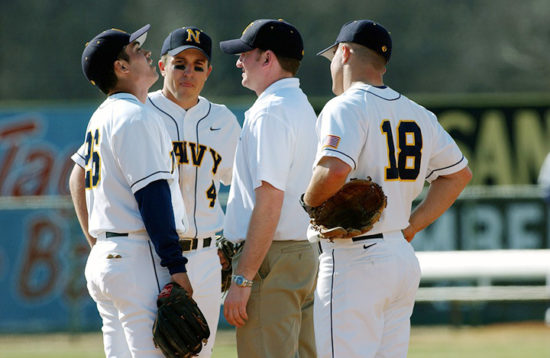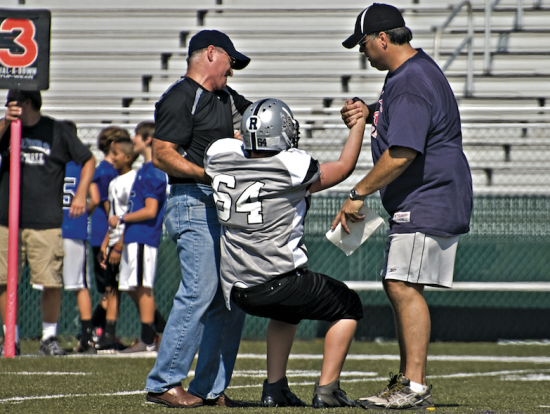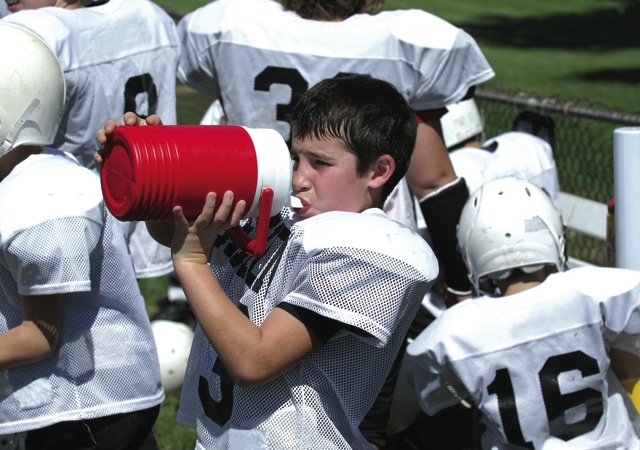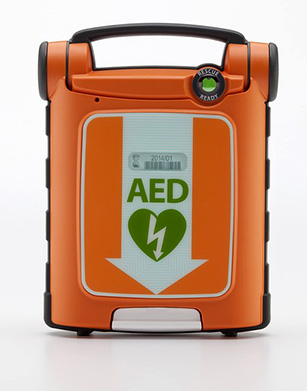SportsMed: Find a way to get an athletic trainer on staff

The role of the athletic trainer (AT) in preventing and managing sports injuries has become an indispensable component for professional and collegiate athletic programs.
Unfortunately, the availability of an AT is considered a luxury for high school athletics. There’s a growing saying in the world of athletics: If you cannot afford an AT, you cannot afford an athletics program.The value of an AT is difficult to quantify, which is often an obstacle to justifying the funding of the position. In a high school setting, the AT serves at the coordinator of the athletes’ care, creating two areas of value: Value in terms of competitive advantage, and value in terms of healthcare service.
Competitive advantage
The AT provides medical services to the athlete before, during and after an injury.
Before injuries occur, the AT develops training and prevention programs, ensuring that your athletes have the proper strength, power, agility, flexibility and neuromuscular coordination to maximize performance and minimize the risk of injury.
When an injury occurs, ATs apply specialized knowledge and skills to ensure a safe and rapid return to play. We have all seen that injured athlete lying on the field or the court and wondered: Is it safe to move him or her? When an AT is present, he or she performs a quick assessment of the injury and determines the level of care required.
Following an injury, the AT serves as the case manager to coordinate care. He or she assesses the extent of the injury and determines when the athlete can safely return to play. If the athlete needs additional medical services, the AT should be the person to communicate with parents, coaches and physicians. Most importantly, the AT takes the time to explain the nature of the injury and necessary care to the athlete (and his or her parents), helping to reduce apprehension.
The AT also works closely with the athletes physician to ensure that the athlete receives proper follow-up care. The AT can facilitate a referral to a physician who specializes in sports medicine and will help optimize the rehabilitation process to ensure the quickest possible return to play.
 All of this adds up to greater value in terms of availability of athletes for competitive events. From an economic perspective, professional sport organizations realize that paying star players high salaries when they are injured can translate into millions of dollars in lost playing time. The relatively small investment in an AT provides a potentially huge return on investment (ROI) if it enables high-salary players to participate in all of their games. Although high school athletes do not get paid, the ROI is realized by maximizing the participation of the athletes, which can substantially affect the teams win-loss ratio.
All of this adds up to greater value in terms of availability of athletes for competitive events. From an economic perspective, professional sport organizations realize that paying star players high salaries when they are injured can translate into millions of dollars in lost playing time. The relatively small investment in an AT provides a potentially huge return on investment (ROI) if it enables high-salary players to participate in all of their games. Although high school athletes do not get paid, the ROI is realized by maximizing the participation of the athletes, which can substantially affect the teams win-loss ratio.
Healthcare service
ATs are healthcare providers, recognized by the American Medical Association. As such, you cannot ignore the value of the care they provide. ATs are qualified to provide skilled rehabilitation care for athletic injuries. If these athletes received care in a physical therapy clinic, the average per visit cost can range from $100 to $300; this translates into thousands of dollars in annual savings when care is delivered by an AT.
The cost-savings is not limited to rehabilitation services. ATs are highly skilled in determining the nature and extent of an athletic injury, potentially decreasing the number of physician office visits and the volume of clinical services. With the cost of a physicians visit ranging from $200 to $400, this reduction in the utilization of physician services adds up quickly.
Consider the following example: An AT in a high school setting who provides the rehabilitative care for 15 athletes (each averaging 10 rehabilitation visits), and reduces annual physician office visits by 50, results in a savings of $40,000 to $50,000 a year. This conservative estimate of savings is sufficient to fund the salary of an AT. Unfortunately, these savings are not realized by the school, but rather are realized by the parents and their health insurance.
Justifying employing an AT
Hiring an AT may be considered the right thing to do, but booster clubs and school boards typically are concerned with the return on financial investment. Thus, there are two primary foundations from which to build a case for hiring an AT in the high school setting: winning and money.
 In a highly competitive school with a well-funded booster club or school board, promoting the ability to improve athletic performance and win more games may be an excellent argument to justify the position. Naturally, all parties should see the value of providing improved healthcare to their athletes and this point should be highlighted. As an added bonus, they will also see decreased liability — it’s like getting a discount on your homeowner’s insurance for purchasing a security system.
In a highly competitive school with a well-funded booster club or school board, promoting the ability to improve athletic performance and win more games may be an excellent argument to justify the position. Naturally, all parties should see the value of providing improved healthcare to their athletes and this point should be highlighted. As an added bonus, they will also see decreased liability — it’s like getting a discount on your homeowner’s insurance for purchasing a security system.
In a school that places strong emphasis on academic performance, another argument is to advocate for the well-being of the athlete. Because the school does not realize a direct monetary savings from hiring an AT, another entity can profit from providing such services. Local hospitals, orthopedic physicians and rehabilitation clinics may be willing to absorb some or all of the cost to provide an AT as a mechanism to direct needed clinical care to its medical facilities. If the school endorses the healthcare provider as a partner in caring for the athletes, the provider might be able to justify the funding of the position on the basis of revenue generated by the relationship.
There’s a third foundation relating to unfortunate circumstances, which should be the only reason considered when hiring an AT: Preventing the catastrophic injury or death of an athlete.
It’s becoming increasingly common to hear of an athlete a few counties over who died from an injury that might have been prevented or better managed if a healthcare provider (such as an AT) had been present. Heat stroke, concussion, spinal-cord injury, cardiac arrest, and other potentially catastrophic events pose significant threats to the well-being of our children when playing sports. The key here is to convince administrators of this need before a catastrophe occurs.
Once you gain access to an AT, maintain his or her job satisfaction by making that person feel like a part of the team. Athletic trainers choose the sports medicine field to be engaged in both medicine and sports. If they do not feel like welcomed members of the team, they lose that connection to athletics. Thank-you notes, team shirts and perhaps a team-signed ball at the end of the year go a long way to make an AT feel appreciated.





